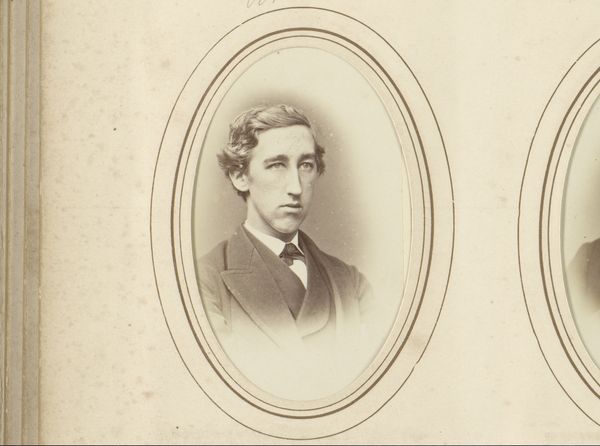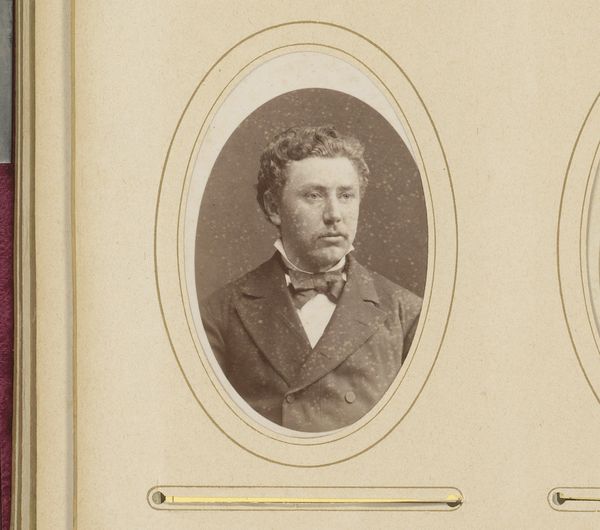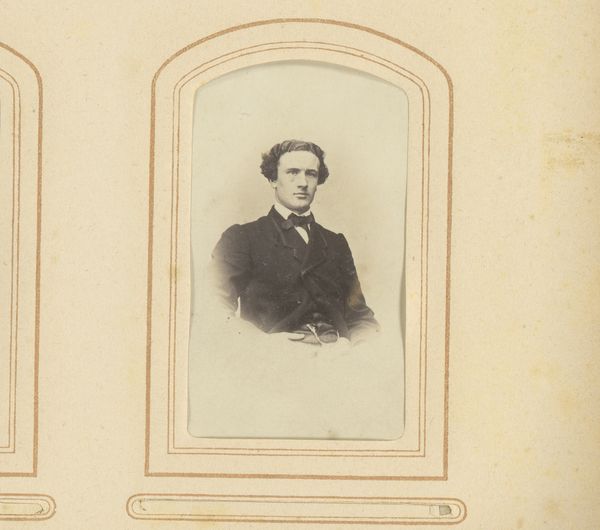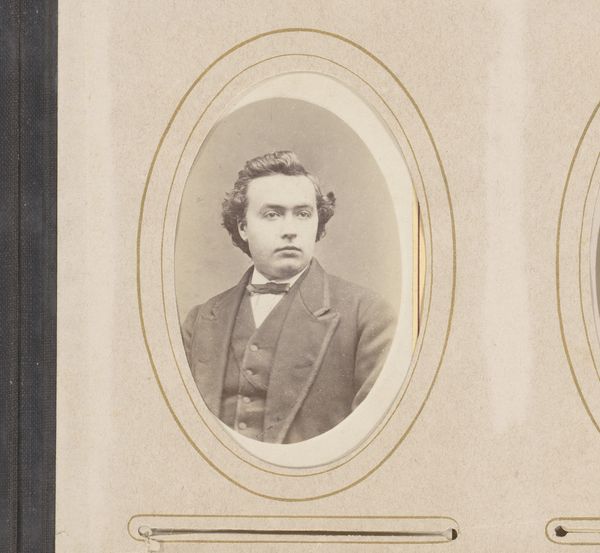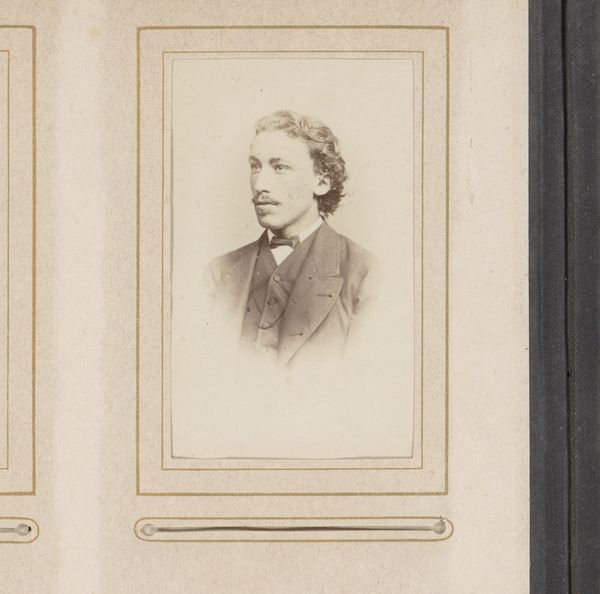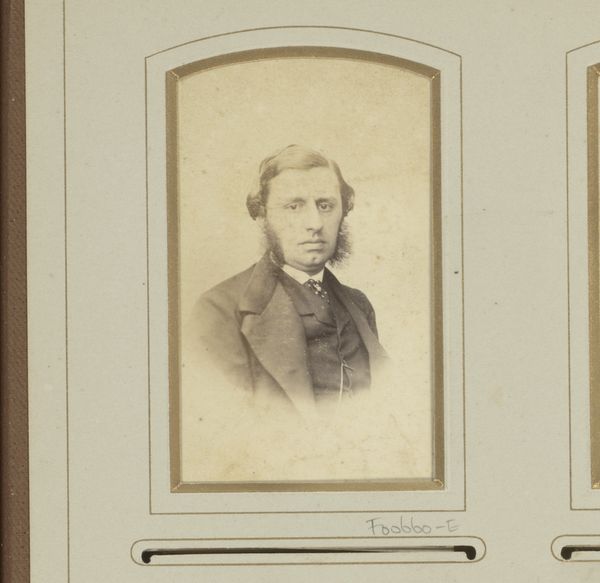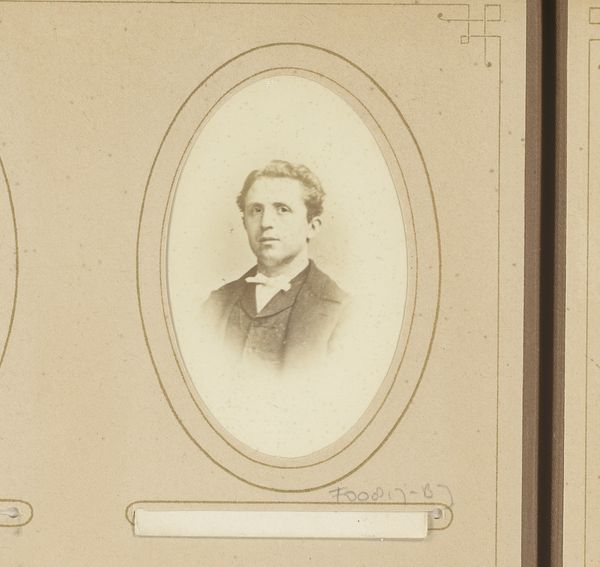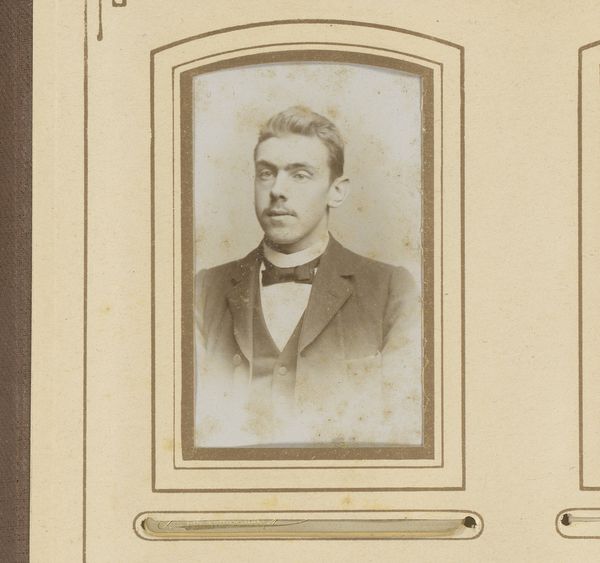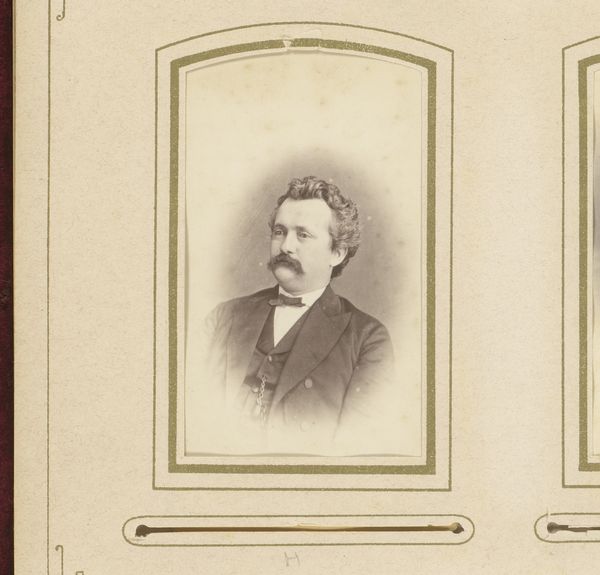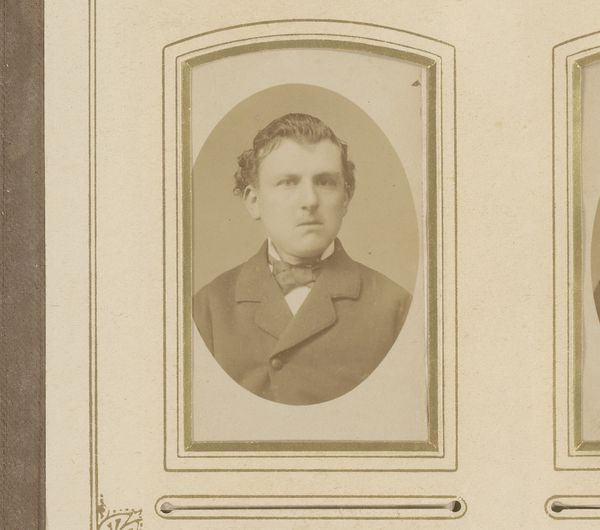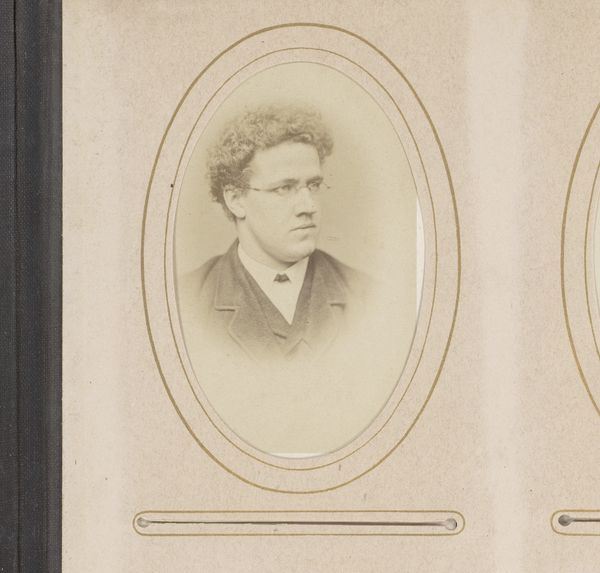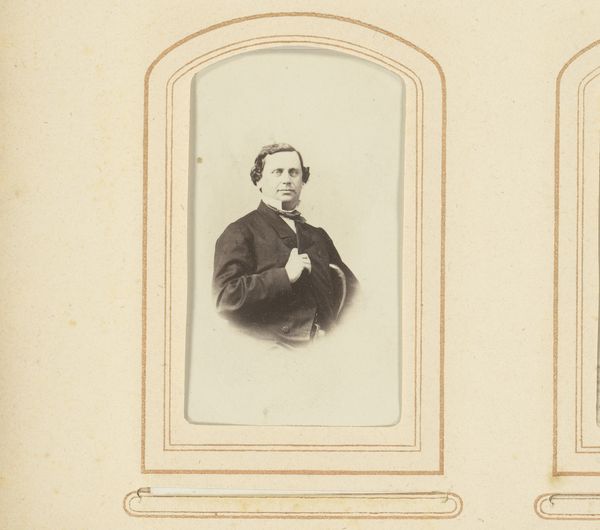
photography, gelatin-silver-print
#
portrait
#
photography
#
gelatin-silver-print
#
realism
Dimensions: height 81 mm, width 52 mm
Copyright: Rijks Museum: Open Domain
Curator: This gelatin silver print, simply titled "Portret van een man", was produced sometime between 1879 and 1900. The photographic print presents us with an austere, yet dignified character. Editor: My first impression is of contained melancholy, wouldn't you agree? The lighting and sepia tones evoke a sense of distance. I can't help but wonder about the social codes embedded in that formal attire and somber expression. Curator: It is a poignant observation, and I find the tangible process fascinating: a physical object produced through precise chemical processes. This work underscores how photographic portraiture became a booming industry that democratized representation, enabling a broader cross-section of society, the middle class, to participate in constructing their own image. Editor: Absolutely, but who was this man, really? And how did access to portraiture affect identity? Considering late 19th-century European social norms, did photography reinforce existing power dynamics or subtly challenge them? The subject's direct gaze implicates the viewer and asks complex questions about historical representation. I want to push beyond the surface appearance to understand his interiority. Curator: Well, examining the materiality – the specific chemicals used to create the gelatin silver print and the paper itself, helps us trace trade routes and even geopolitical influences that shaped art production during this era. Understanding those production chains can challenge romanticized notions of the artist as a solitary genius. Editor: Indeed. It makes one think of all the human hands and economic systems required to realize such a work. Did the labour practices in photographic studios reflect class structures of the period, including exploitation, fair wage... We can think of those conditions while reflecting upon gender hierarchies, particularly for women. Was it liberating to take charge of a camera and start expressing? How many women photographers were contributing at the time to push boundaries in art production? Curator: Such are essential questions! As a materialist, I'm always compelled by the way in which artistic expression intertwines inextricably with very tangible systems and their legacy today. Editor: Agreed. Understanding how representation and social structures operate together can challenge historical amnesia. By asking challenging questions of such conventional objects like portraiture, the conversation evolves into more pressing societal reflections and their complex histories.
Comments
No comments
Be the first to comment and join the conversation on the ultimate creative platform.
